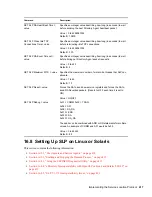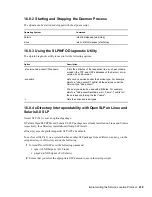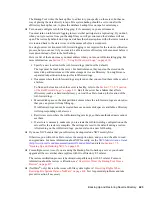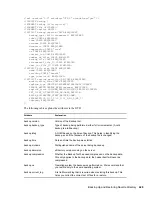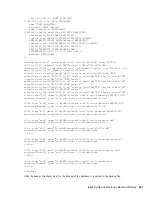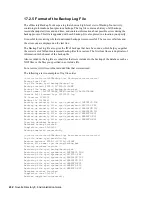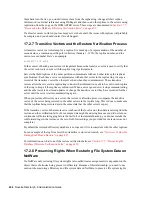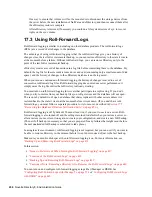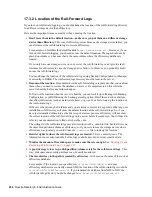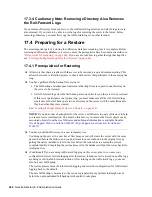
Backing Up and Restoring Novell eDirectory
427
n
ov
do
cx (e
n)
22
Ju
n
e 20
09
17.2.3 Overview of How the Backup Tool Does a Restore
Before restoring, you need to collect all your backup files by following the instructions in
Section 17.4, “Preparing for a Restore,” on page 440
. When you direct the Backup Tool to begin the
restore through iManager or DSBK, the process is done by the Backup Tool as follows:
1. The DS Agent is closed.
2. The active DIB (Data Information Base) set is switched from the DIB set named NDS to a new
DIB set named RST.
(The existing NDS database is left on the server; if the restore verification fails it will once
again become the active DIB set.)
3. The restore is performed, restoring to the DIB set named RST.
4. The DIB set is disabled.
The login disabled attribute is set on the pseudo server, preventing the DS Agent from being
able to open using this DIB set.
5. The roll-forward log settings are reset to the default. You can prevent this by using
-s
switch.
This means that after a restore, roll-forward logging on the server is always set to off, and the
location of the roll-forward logs is reset to the default.
(If you want roll-forward logging turned on for this server, you must plan to re-create your
configuration for roll-forward logging after a restore, to make sure it is turned on and the logs
are being saved in a fault-tolerant location. After turning on the roll-forward logs, you must
also do a new full backup.)
6. Verification of the restored RST database is performed.
The server attempts to verify the consistency of the data that has been restored. It does this by
contacting every server that it shares a replica with and comparing the transitive vectors.
The output from this verification process is printed in the log file.
If the transitive vector on the remote server is ahead of the local vector, then data is missing
from the restore, and the verification fails.
Here is an example of the information that's recorded in the log file if verification fails for one
of the replicas, showing the transitive vectors that were compared:
Ability to restore
NICI files for a
server
Not designed to provide this.
Lets you back up and restore NICI files, so
you can access encrypted data after a
restore. This can save you a lot of time when
restoring.
Roll-forward
logging for an
individual server
Not designed to provide this.
Lets you keep a record of transactions in the
database since the last backup, so you can
restore a server to the state it was in at the
moment before it went down. In a multiple-
server environment, this allows you to
restore a server to the synchronization state
that the other servers expect. Roll-forward
logging is off by default. For more
information, see
Section 17.3, “Using Roll-
Forward Logs,” on page 436
.
Issue
Legacy TSA for NDS Backup
Backup Tool “Hot Continuous Backup”
Summary of Contents for EDIRECTORY 8.8 SP5
Page 4: ...4 Novell eDirectory 8 8 Administration Guide novdocx en 22 June 2009...
Page 72: ...72 Novell eDirectory 8 8 Administration Guide novdocx en 22 June 2009...
Page 118: ...118 Novell eDirectory 8 8 Administration Guide novdocx en 22 June 2009...
Page 130: ...130 Novell eDirectory 8 8 Administration Guide novdocx en 22 June 2009...
Page 188: ...188 Novell eDirectory 8 8 Administration Guide novdocx en 22 June 2009...
Page 222: ...222 Novell eDirectory 8 8 Administration Guide novdocx en 22 June 2009...
Page 240: ...240 Novell eDirectory 8 8 Administration Guide novdocx en 22 June 2009...
Page 264: ...264 Novell eDirectory 8 8 Administration Guide novdocx en 22 June 2009...
Page 290: ...290 Novell eDirectory 8 8 Administration Guide novdocx en 22 June 2009...
Page 322: ...322 Novell eDirectory 8 8 Administration Guide novdocx en 22 June 2009...
Page 540: ...540 Novell eDirectory 8 8 Administration Guide novdocx en 22 June 2009...
Page 548: ...548 Novell eDirectory 8 8 Administration Guide novdocx en 22 June 2009...
Page 616: ...616 Novell eDirectory 8 8 Administration Guide novdocx en 22 June 2009...





